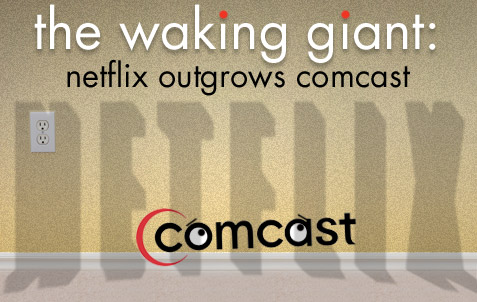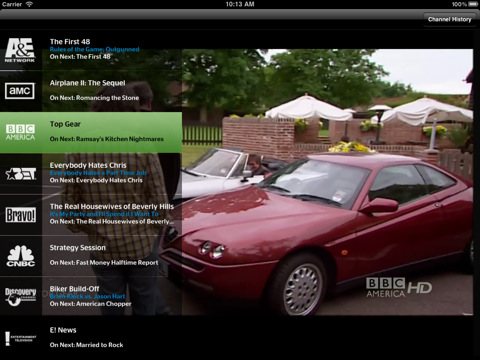
04/29/2011
Gadgets Channel / Bullz-Eye Home
We all knew this day was coming. We’ve been warned about it, heard all of the hyperbolic cautions about the death of network television and the demise of living room entertainment in favor of those damn computers. That day is finally here; Netflix posted Q1 subscription numbers of more than 23.6 million, a number that makes Netflix officially bigger than Comcast. But for all the warnings the cable companies have had about online services, they’ve done very little to prepare for this impending premium programming apocalypse. It’s a shame, too, because Netflix isn’t a perfect service and there is plenty of room to sneak in and snatch up market share.
Perhaps the most important point in the traditional vs. streaming television battle is that Netflix doesn’t have a solid growth model, at least not yet. Most analysts expect that contract renewal from services like Starz could cost Netflix as much as ten times the current contract price (for Starz, the contract is $25 million). The $8 a month streaming subscription certainly isn’t going to cover that kind of licensing fee, and that’s just one distribution house. What about the outlets Netflix has yet to woo? All of those contracts cost money, which means the Netflix service levels will have to see a price increase - something consumers definitely won’t be excited about - in order to get full coverage.
 As Netflix gets closer to full coverage, including networks like HBO, the service will become more and more of a cable replacement. Cable companies could keep consumers interested in their subscriptions by making content available for both live streaming and on-demand viewing on any device in the house. Time Warner has been trying something like this on its iPad app, but the service is limited, both by the programming available and the technical aspects of content delivery. Time Warner customers can only use the iPad app in the house where they own a subscription, limiting some of the flexibility of a tablet.
As Netflix gets closer to full coverage, including networks like HBO, the service will become more and more of a cable replacement. Cable companies could keep consumers interested in their subscriptions by making content available for both live streaming and on-demand viewing on any device in the house. Time Warner has been trying something like this on its iPad app, but the service is limited, both by the programming available and the technical aspects of content delivery. Time Warner customers can only use the iPad app in the house where they own a subscription, limiting some of the flexibility of a tablet.
Obviously this is all limited by money. If cable companies can’t put together a compelling contract price for streaming content, the content providers aren’t going to bite. I think part of the problem here is the advertisers. Anyone who has streamed content from Hulu over the last six months has probably seen the ads that ask, “Do you want to hear about this car from a design or budget perspective?” You then select the type of ad you “want” to watch, as though TV viewers are just watching shows so they can get to the ads. The truth is, people don’t like ads, and despite the web’s interactive nature, the best interactivity advertisers can come up with are radio bubbles that slightly alter your advertisement. The streaming ad scene should be radically different from your average TV ads, if only because people interact with computers and other streaming devices so much differently than with a TV.
Imagine a cable company that develops an API for interactive advertising to be interspersed in streaming content. The cable provider manages deployment, all the advertisers have to do is adhere to the development protocol. Imagine a game like FarmVille, only it’s run by Time Warner and somehow integrates advertising content. Make the advertising more intuitive for the device it’s running on and you’ll see better return from it, which in turn means you can sell that ad space for more money. More money means more cash for the content consumers want, deliverable in on-demand and live streaming packages.
Let’s not forget that consumers and advertisers aren’t the only people the cable company needs to court. Netflix inked a deal earlier this year for exclusive rights to David Fincher’s “House of Cards,” a deal that includes at least 26 episodes of the political thriller series. Apparently Netflix is appealing enough to start locking up content of its own, a move that should seriously scare every cable provider. If content providers are already willing to go straight-to-streaming, we’re way past the negotiation period for online distribution. Traditional cable outlets need to figure out an online system, and fast. Netflix obviously isn’t watching cable for its cues, and cable hasn’t been watching Netflix closely enough.
You can follow us on Twitter and Facebook for content updates. Also, sign up for our email list for weekly updates and check us out on Google+ as well.









